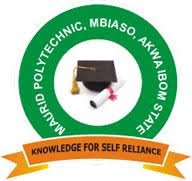Concise Guide to Polytechnic Computer Science Subjects List

Entry Requirements to Study Computer Science in a Polytechnic
Here are the course entry requirements to study Computer Science in a polytechnic:
- A minimum of five credit passes in relevant subjects in SSCE/GCE ordinary level. The credit passes should be obtained at not more than two sittings.
- Five credit passes in relevant subjects attained at the end of an NBTE-approved Preliminary National Diploma (Pre-ND) program delivered in a polytechnic or similar higher institution.
- A pass in a trade plus four relevant academic courses on the National Technical Certificate (NTC) or National Business Certificate (NBC).
- A qualifying score on the UTME exam, as determined by JAMB on an annual basis.
- SSCE GCE O’ Level with a minimum of pass grades/ordinary passes or their equivalent in English Language and Mathematics, as well as three subjects from the following list: Further Mathematics, Biology/ Agricultural Science/Health Science, Food and Nutrition, Physics, Technical Drawing/ Fine Arts, Geography, General Metal Work, Food and Nutrition, General Metal Work, Basic Electricity, Statistics, General Woodwork, Economics, Economics, Religious Knowledge, and Clothing and Textile.
List of Computer Science Subjects or Courses in a Polytechnic
Human-Computer Interaction
Human-Computer Interaction (HCI) is a field that focuses on the interfaces between humans and computers and is focused on the design and usage of computer technology.
Human-Computer Interaction (HCI) researchers study how people interact with computers and develop technology that allows them to do so in new ways.
Data Science
Data Science is an interdisciplinary field that uses scientific methods, procedures, algorithms, and systems to extract information and insights from structured and unstructured data, as well as to apply that knowledge and actionable insights to a variety of application areas.
Natural Language Processing
Natural Language Processing is a branch of linguistics, computer science, and artificial intelligence concerned with computer-human interaction, particularly how to design computers to process and evaluate huge volumes of natural language data.
Software Engineering

The application of engineering concepts to software development is known as software engineering. Its primary purpose is to create, improve, and maintain software.
When working on a program, software engineering considers engineering aspects such as the hardware and software environment.
Cyber Security
Cybersecurity refers to the safeguarding of internet-connected systems, including hardware, software, and data, from cyberthreats.
Individuals and businesses utilize the method to prevent illegal access to data centers and other digital systems.
Networking and Communication
The study, design, implementation, and use of local, wide-area, and mobile networks that connect computers are all part of networking and communication. The Internet is a network that allows practically all computers on the planet to communicate with one another.
Computer Graphics
Computer graphics is a branch of computer science that investigates ways of creating and modifying visual images digitally.
Although the phrase is most commonly associated with three-dimensional computer graphics, it also includes two-dimensional graphics and image processing.
Algorithms and Complexity
Algorithm complexity is a metric that examines the order of a given or algorithm’s count of operations as a function of the size of the input data.
To put it another way, complexity is a rough estimate of the number of steps required to complete an algorithm.
Computer Science
Computer science is the study of computers and computational systems.
Computer scientists create and analyze algorithms to solve programs and research computer hardware and software performance. A specialization in computer science makes a kind of a “jack of all trades” with the ability branch to any other aspect.
Information Systems
Information System is a collection of interconnected components that gather, store, and analyze data and provide information, knowledge, and digital products.
Interorganizational supply chains and electronic markets are run using information systems.







